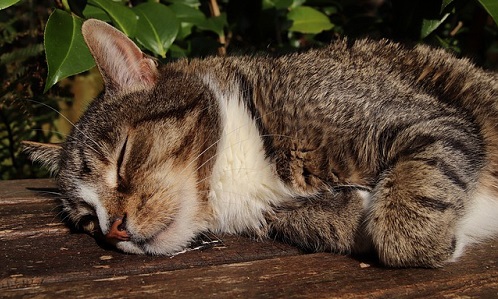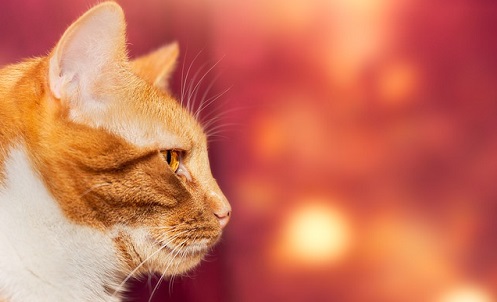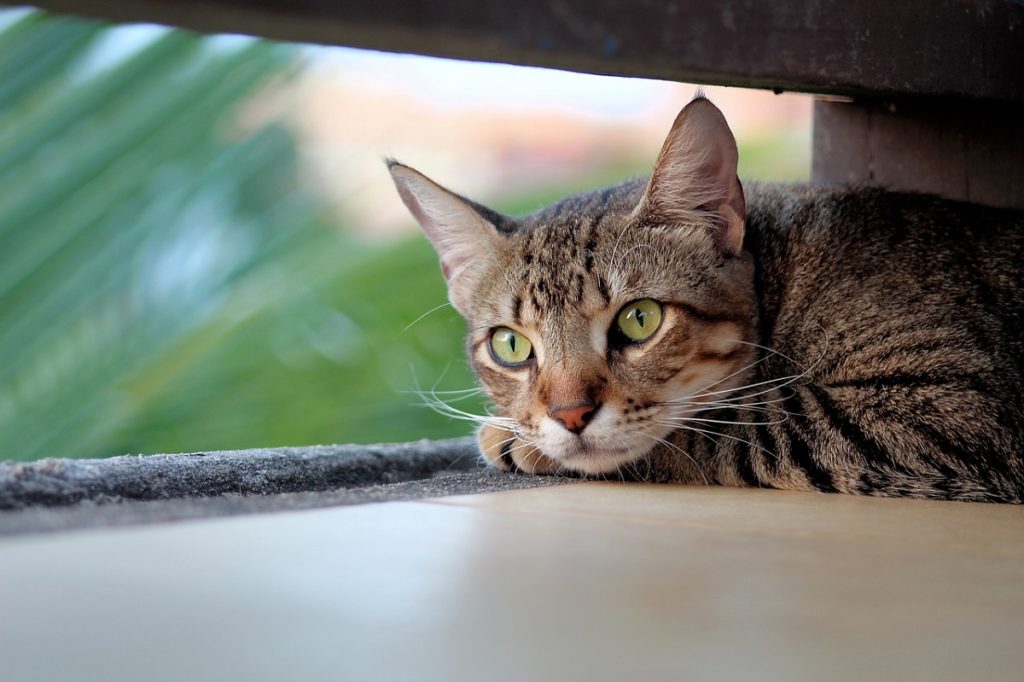Is your cat displaying abnormal symptoms, but you aren’t quite sure what is causing them? A neurological disorder in cats can lead to an array of symptoms that can progress swiftly and affect some of your cat’s most vital bodily processes. Whether it is affecting a human being or a cat, a neurological disorder can be frightening and perplexing. The brain is extremely complex and controls the cat’s ability to breathe, move, respond, and more.
If you think that your cat may be suffering from a neurological disorder, but aren’t sure what symptoms to look for or the different types of neurological disorders in cats, you’re not alone. As a pet owner, it’s helpful to arm yourself with the foundational knowledge needed to recognize that there is an issue so that you can get your cat the help he needs as quickly as possible. Below is an introductory guide to neurological disorders in cats. This article will break down what symptoms to keep an eye out for, some of the types of nervous system disorders, and the basics on diagnosing neurological disorders in cats.
What Is a Neurological Disorder?
Have you heard of neurological disorder in cats, but aren’t quite sure what that means? Neurological disorders affect a cat’s nervous system, which is made up of several different components. The peripheral nervous system is the spinal, cranial, and other nerves and muscles in the body. The central nervous system, on the other hand, is made up of the spinal cord and the brain. The autonomic nervous system is the neurons in your cat’s body that direct the organs to work, such as for the heart to pump blood out to the rest of the body. When you look at these three distinct and vital components of a cat’s body, it’s easy to see why neurological disorders can be extremely serious.
 The feline nervous system controls a cat’s ability to do many basic functions, such as being able to walk and open his mouth to eat. Just as with human beings, neurological disorders can affect various aspects of the nervous system, which determines the symptoms that neurological disorder will present. For example, a neurological disorder that targets the cat’s central nervous system may present differently than one that affects his peripheral nervous system. When it comes to neurological disorders in cats, back legs could be experiencing paralysis or the cat could have lost his vision, it depends on what part of the nervous system is being affected. Because of this, it is vital to be vigilant about tracking your cat’s symptoms if you suspect he may be suffering from a neurological disorder. By doing so, you will enable your veterinarian to be able to have accurate information and a timeline of the onset of symptoms to use to base their diagnosis on. In order to make sure your cat gets veterinary attention quickly, it is useful to know the common symptoms of a neurological disorder in cats.
The feline nervous system controls a cat’s ability to do many basic functions, such as being able to walk and open his mouth to eat. Just as with human beings, neurological disorders can affect various aspects of the nervous system, which determines the symptoms that neurological disorder will present. For example, a neurological disorder that targets the cat’s central nervous system may present differently than one that affects his peripheral nervous system. When it comes to neurological disorders in cats, back legs could be experiencing paralysis or the cat could have lost his vision, it depends on what part of the nervous system is being affected. Because of this, it is vital to be vigilant about tracking your cat’s symptoms if you suspect he may be suffering from a neurological disorder. By doing so, you will enable your veterinarian to be able to have accurate information and a timeline of the onset of symptoms to use to base their diagnosis on. In order to make sure your cat gets veterinary attention quickly, it is useful to know the common symptoms of a neurological disorder in cats.
Symptoms of a Feline Neurological Disorder
Knowing what symptoms to keep an eye out for will allow you to get your cat medical attention and the treatment he needs. As mentioned above, your cat may only be experiencing one or a few of these symptoms since the signs vary depending on the type of neurological disorder and what parts of the nervous system it affects. Below is a compilation of symptoms of various brain disorders in cats to help you know what to look for.
- Seizures
- Tremors
- Loss of balance
- Blindness
- Pacing
- Coma
- Lack of coordination
- Hyperactive reflexes
- Weakness
- Stupor
- Walking in circles
- Loss of sense of smell
- Paralysis of the face, limbs, or body
- Muscle twitching
- Abnormally rapid eye movements (nystagmus)
- Disorientation
- Confusion
If you see your cat displaying any of the symptoms above, it is important to call your veterinarian and make an appointment for a full physical examination as soon as possible. These symptoms could be signs that your cat is suffering from a neurological disorder, which can be terrifying and uncomfortable. Once you take your cat to the veterinarian, they will be able to do any necessary tests once they have examined your cat and taken a medical history in order to form a diagnosis. To diagnose your cat, the veterinarian will need to determine what type of feline neurological disorder he is suffering from.
Types of Feline Neurological Disorders
There are many different types of neurological disorders in cats that could be the potential culprit of the symptoms you have observed. Neurological disorders in cats can be congenital, meaning that they are born with a neurological problem, or can be infectious, which is when a cat becomes infected with a virus or disease that causes the neurological disorder to develop. Cats can also develop neurological disorders from trauma, such as being hit by a car or from aging. No matter what category the neurological disorder falls into, it is vital to get an accurate diagnosis as soon as possible so that your cat can begin receiving treatment. Below are a handful of different types of feline neurological disorders as well as a brief description of each disorder.
Epilepsy and Seizures
 Did you know that cats can also suffer from epilepsy and seizures just like their human counterparts? Feline epilepsy can stem from an injury, such as a significant trauma to the brain, tumors, or metabolic irregularities, but in some cases, veterinarians are not able to determine why a cat is epileptic. In these instances, it is referred to as idiopathic epilepsy. When a cat is epileptic, his brain is not able to transmit nerve signals within his cerebral cortex, which is the part of the brain that controls a cat’s voluntary muscle movement, as well as the memory, thoughts, and sensations. If a cat is diagnosed with epilepsy, a veterinarian will use medication to attempt to reduce the frequency and severity of the seizures.
Did you know that cats can also suffer from epilepsy and seizures just like their human counterparts? Feline epilepsy can stem from an injury, such as a significant trauma to the brain, tumors, or metabolic irregularities, but in some cases, veterinarians are not able to determine why a cat is epileptic. In these instances, it is referred to as idiopathic epilepsy. When a cat is epileptic, his brain is not able to transmit nerve signals within his cerebral cortex, which is the part of the brain that controls a cat’s voluntary muscle movement, as well as the memory, thoughts, and sensations. If a cat is diagnosed with epilepsy, a veterinarian will use medication to attempt to reduce the frequency and severity of the seizures.
Meningitis and Encephalitis
Meningitis and encephalitis are two very serious brain conditions. Meningitis is when the membrane that surrounds the spinal cord and covers the brain becomes inflamed. Encephalitis, on the other hand, is when the brain becomes inflamed. What causes these two dangerous neurological conditions to develop? These brain conditions are often caused by infection, which can be parasitic, viral, fungal, or bacterial. When these conditions occur at the same time it is called meningoencephalitis. If a cat is diagnosed with one or both of these neurological conditions, a veterinarian may utilize corticosteroids to help lessen the inflammation of the membrane around the brain and spinal cord, the brain, or both. In addition to the use of corticosteroids, a veterinarian may also prescribe antifungals, antiparasitic, or antibiotics in order to fight off the infection that causes meningitis and/or encephalitis to develop. As the cat is undergoing treatment, he may also be given medication to help control his pain, fluids to keep him hydrated, and nutritional supplements to maintain vital nutrient levels.
Vestibular Disease
Vestibular disease is a neurological disease that occurs when there is pressure exerted on the nerves that control a cat’s vestibular system in the ear canal. In many cats, this causes the feline to develop vertigo and appear dizzy or unbalanced. As a result of the vestibular disturbance, cats may also exhibit rapid abnormal eye movements or tilt their head side to side. Vestibular disease can stem from a number of different causes, such as a serious ear infection, encephalitis, meningitis, meningoencephalitis, or a tumor, to name a few. The development of vestibular disease can also indicate an immune system dysfunction in some cats. Depending on what the underlying cause of vestibular disease is, the treatment method will vary. If it is from an ear infection, for example, a veterinarian may prescribe oral medication and ear drops to treat the infection.
Cognitive Dysfunction
Cognitive dysfunction is more commonly known as dementia. Cognitive dysfunction typically occurs in cats that are in their later years and aging. These senior cats may begin to become more forgetful, such as forgetting where their water bowl is, how to use their litter box, or how to find their favorite spot to nap in the sun. Despite having successfully navigated their home and used the bathroom many times before, it may seem that they are slowly forgetting things they once knew. Cognitive dysfunction is not curable, but in some cases, a veterinarian may recommend supplements or medications to help slow the onset of symptoms and improve quality of life.
Feline Hyperesthesia
One of the lesser-known neurological disorders in cats is feline hyperesthesia or rippling skin disorder. This unique disorder occurs when a cat’s skin on his back begins to exhibit erratic movements that appear like ripples across their skin. This phenomenon appears similar to when a cat is stroked along his back and he twitches or ripples due to the stimulation. Cats will also sometimes display bursts of energy during which they may begin to aggressively chew or scratch at the affected area or run around the house meowing. There is no known cause to this bizarre neurological disorder, though it is sometimes thought to stem from stress and anxiety.
Tumors
One common cause of neurological disorders in cats is tumors. Tumors can result in a number of troubling and dangerous symptoms, such as difficulty walking and maintaining balance, blindness, behavioral changes, seizures, and more. When a tumor is benign, it is called a meningioma, which develops in the meninges. The meninges is the thin protective tissue that surrounds a cat’s brain. Meningiomas can often be removed with surgery and cats can make a full recovery after their removal. It is important to note that if left untreated, meningiomas can continue to expand and exert pressure on the brain, which can result in damage and additional symptoms. Cats can also develop cancerous brain tumors that may be treated with surgery or radiation and chemotherapy, or a combination of the two. However, the viability of these treatment methods is dependent on where the cancerous tumor is and whether or not it is reachable by surgery or responsive to treatment.
Getting a Diagnosis: How it Works
If you suspect a neurological disorder may be to blame for your cat’s symptoms, it is vital to make an appointment with a licensed veterinarian. Before your appointment, compile any relevant information about your cat’s medical symptoms, a timeline of when the symptoms first appeared and if they have worsened over time, as well as a comprehensive list of the symptoms you have observed. It can be easy to become overwhelmed once you are at the veterinarian’s office. This quick step helps make sure your veterinarian will have all the foundational information they need to work towards a diagnosis.
 Once you are at your appointment and have provided your veterinarian with the symptoms and reason for the visit, they will usually do a physical and neurological examination to observe your cat’s reaction to various stimuli, their motor function, and nerve function. If they believe a neurological disorder is to blame, they may order a number of different tests depending on the type of neurological disorder they suspect. These tests could include blood tests to look for infections, an autoimmune disorder, metabolic conditions, and more or an X-ray to look at the structure of the brain. Veterinarians also rely on tests like MRIs and CT scans to get a more detailed image of your cat’s body and brain.
Once you are at your appointment and have provided your veterinarian with the symptoms and reason for the visit, they will usually do a physical and neurological examination to observe your cat’s reaction to various stimuli, their motor function, and nerve function. If they believe a neurological disorder is to blame, they may order a number of different tests depending on the type of neurological disorder they suspect. These tests could include blood tests to look for infections, an autoimmune disorder, metabolic conditions, and more or an X-ray to look at the structure of the brain. Veterinarians also rely on tests like MRIs and CT scans to get a more detailed image of your cat’s body and brain.
There are additional tests that can be ordered to provide your veterinarian with all the information they need to make a diagnosis. In some cases, a veterinarian may also recommend a specialist for a second opinion or for the treatment depending on the results of their initial examination. Once they have conducted the necessary tests and determined the cause of the symptoms, they will recommend a treatment and care plan. Hopefully, that results in your cat feeling better soon.
Sources:
- “Neurological Disorders.” Cornell University College of Veterinary Medicine, 22 May 2018, www.vet.cornell.edu/departments-centers-and-institutes/cornell-feline-health-center/health-information/feline-health-topics/neurological-disorders.
- Burry, Madeleine. “Brain Health and Neurological Disorders in Cats.” PetCareRx, 3 Apr. 2013, www.petcarerx.com/article/brain-health-and-neurological-disorders-in-cats/914.
- “Brain Disorders in Cats – Symptoms, Causes, Diagnosis, Treatment, Recovery, Management, Cost.” WagWalking, 17 Aug. 2016, wagwalking.com/cat/condition/brain-disorders.
- Stregowski, Jenna. “Understanding Neurological Disorders in Cats.” The Spruce Pets, 18 Feb. 2019, www.thesprucepets.com/neurological-disorders-in-cats-555286.




